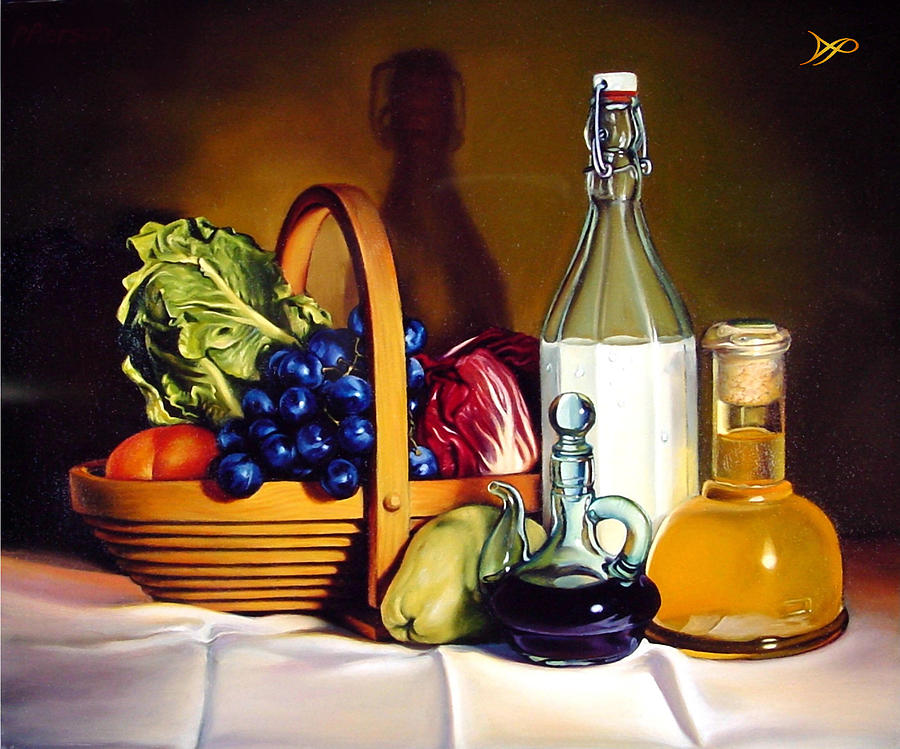Shop Curated Assortments of Oil Paintings for Sale
Shop Curated Assortments of Oil Paintings for Sale
Blog Article
Exploring Everything About Oil Paintings: A Guide to Recognizing Their Appeal and Value
Oil paints have captivated audiences for centuries, providing a look into the creative mastery of numerous eras. Their rich background is linked with innovative strategies and extensive emotional expression. Understanding the products and techniques behind these art work can improve gratitude. In addition, the market for oil paintings presents possibilities for investors and enthusiasts alike. As one explores this fascinating globe, the concern occurs: what makes an oil painting absolutely beneficial?
The Background of Oil Paint: A Journey Via Time
Although oil painting has roots that go back to ancient times, it truly grew throughout the Renaissance, when musicians discovered its flexibility and rich shade possibility. Early examples can be mapped to the 7th century, with strategies evolving significantly across societies. The tool became popular in Northern Europe in the 15th century, especially with the jobs of musicians like Jan van Eyck, that spearheaded its use for comprehensive realism and lively hues. This duration noted a departure from tempera paints, permitting greater deepness and texture. As oil paint spread, it affected many musicians, causing masterpieces by popular figures such as Leonardo da Vinci and Rembrandt. The medium's heritage continues, shaping the art globe well right into modern-day times.
Comprehending Oil Paints: Products and Techniques
As musicians explore the world of oil paints, they experience a diverse array of products and strategies that specify this tool. The primary parts of oil paint include pigments, which give shade, and drying oils, such as linseed, that bind the pigments and assist in application. Numerous ingredients can change the paint's texture and drying out time, boosting flexibility. Techniques like glazing, where clear layers are accumulated, and impasto, which includes using thick paint, permit different visual impacts. Furthermore, using brushes, combination knives, and also fingers can create special structures and coatings. Comprehending these strategies and products enables artists to completely share their creative thinking and attain the preferred influence in their art work.
The Function of Color in Oil Paints
Color plays a critical role in oil paints, influencing both aesthetic allure and psychological resonance. Understanding shade concept fundamentals, including the partnerships between tones, can improve a musician's capability to communicate mood and atmosphere. In addition, understanding shade blending methods enables better deepness and splendor in a paint's scheme.

Color Concept Fundamentals
Recognizing color theory is necessary for artists dealing with oil paints, as it develops the foundation for developing aesthetically appealing and harmonious compositions. Color concept includes the study of how shades communicate, the color wheel, and the relationships in between key, secondary, and tertiary colors. Musicians make use of complementary colors to improve contrasts and create focal points, while comparable colors promote unity and cohesiveness within an item. Furthermore, the concepts of cozy and amazing shades influence the perception of deepness and room in a paint. Grasping these principles allows musicians to manipulate shade efficiently, assisting the customer's eye and communicating their intended message. Mastery of color concept ultimately improves a musician's capacity to communicate emotions and concepts through their work.
Psychological Influence of Shade
The emotional influence of color in oil paintings plays a vital role in exactly how visitors attach and perceive with artwork. Shades evoke certain sensations and state of minds, affecting the audience's psychological state. For example, cozy colors like oranges and reds can create a sense of warmth and energy, while cool tones such as blues and eco-friendlies usually stimulate calmness or self-questioning. Artists purposefully choose color schemes to boost narrative components, assisting the audience's emotional journey. The saturation and contrast of colors even more amplify these results, attracting focus and developing focus. Inevitably, the interaction of colors in oil paintings not only enhances their visual allure yet additionally acts as an effective tool for psychological expression, enhancing the audience's experience and interpretation.
Color Combining Techniques
While several facets of oil paint contribute to the general make-up, understanding shade blending strategies is essential for achieving desired effects and depth. Shade mixing can be approached through various techniques, consisting of the additive and subtractive processes. Additive mixing includes integrating colors of light, while subtractive blending depends on pigments, where shades mix to produce new tones. Musicians often use a restricted palette to produce unified jobs, recognizing the connections in between main, secondary, and tertiary colors. Techniques such as glazing and scumbling better improve deepness and brightness. By skillfully blending colors, a musician can evoke feelings, create centerpieces, and achieve a feeling of realism, ultimately boosting the paint's psychological and aesthetic impact.
Famous Oil Painters and Their Iconic Functions

Famed for their proficiency of color and method, oil painters have actually developed some of the most well known artworks in history. Distinguished musicians like Vincent van Gogh astounded target markets with his stirring brushwork in "Starry Evening," while Claude Monet's "Impact, Sunrise" prepared for Impressionism. Leonardo da Vinci's "Mona Lisa" remains an enduring icon of imaginative wizard, showcasing his ability in recording human expression. Meanwhile, Rembrandt's "The Night Watch" highlights his ingenious use of light and shadow. Other notable figures include Pablo Picasso, who reinvented contemporary art with his strong testing in works like "Les Demoiselles d'Avignon," and Georgia O'Keeffe, whose dynamic depictions of flowers and landscapes aided specify American modernism. Each artist's unique design added greatly to the oil painting landscape.
How to Assess the High Quality of an Oil Painting
Examining the top quality of an oil painting entails a mindful analysis of workmanship methods, as well as an evaluation of shade and composition. Observing brushwork, layering, and the application of paint can reveal the musician's skill degree. Furthermore, the interplay of colors and the total plan of elements contribute considerably to the painting's visual worth.
Analyzing Workmanship Methods
A precise analysis of workmanship strategies is crucial for establishing the top quality of an oil painting. Critics ought to initially take a look at the application of paint; thick, textured brushstrokes may recommend a competent hand, while overly uniform applications could indicate an absence of deepness. oil paintings for sale. The layering strategy is also important; the presence of lusters and differed density can improve brightness and intricacy. In addition, the high quality of the materials used, such as the canvas and pigments, plays a considerable function in durability and general aesthetic. Focus to detail in components like sides and shifts between colors mirrors the artist's dedication to their craft. Eventually, these techniques add to the painting's emotional impact and market value, serving as indications of the musician's skill and intent
Examining Shade and Structure
While reviewing the top quality of an oil paint, one should focus on the interplay of shade and structure, as these elements are fundamental to the art work's overall influence. Shade selections can establish and stimulate emotions mood; for that reason, the musician's scheme should be taken a look at for harmony and comparison. A well-balanced make-up routes the customer's eye and develops a sense of unity. Artists often use strategies like the regulation of thirds or leading lines to improve visual rate of interest. Furthermore, the usage of light and darkness can add depth, enhancing the three-dimensionality of the paint. Eventually, an effective oil painting marries color and structure, involving the customer and welcoming a much deeper recognition of the artist's vision and strategy.
Caring for and Preserving Oil Paintings
Appropriate treatment and conservation of oil paintings is necessary for preserving their integrity and durability. To shield these artworks, it is important to present them away from straight sunlight, which can trigger fading and discoloration. Maintaining a secure setting with regulated temperature and humidity further aids in protecting against damages. Cleaning up must be done carefully utilizing a more info soft, completely dry cloth, preventing any severe chemicals that could damage the paint or varnish. Routine examinations for indications of damage, such as splitting or flaking, are a good idea. When storing or transferring oil paintings, correct padding and framework are required to avoid physical damage. Inevitably, thorough treatment adds to the aesthetic allure and value of oil paints over time.
The Market for Oil Paints: Collecting and Investing
Understanding the marketplace characteristics for oil paintings is vital for collection agencies and financiers alike. The value of these art work is affected by different factors, including the artist's reputation, historic significance, and present fads. Collection agencies typically seek pieces that resonate personally while considering prospective recognition in value. Galleries and public auctions act as primary places for buying and selling, with costs fluctuating based upon demand and rarity. Purchasing oil paintings calls for research right into the market, along with an understanding of credibility and provenance. Additionally, emerging artists might use opportunities for considerable returns, while developed names can command high rates. In general, a calculated method to collecting can yield both visual pleasure and economic rewards.

Frequently Asked Inquiries
What Are the Environmental Effects of Oil Paint Products?
The environmental influences of oil paint materials include the launch of unstable natural substances (VOCs), dangerous waste generation, and resource removal for pigments. These aspects add to air pollution and ecological destruction, elevating problems amongst ecologically conscious musicians and customers.
How Do Various Canvases Impact Oil Painting Outcomes?
Different canvases affect oil paint results substantially. Structure, absorbency, and surface area quality can change paint application, drying out times, and shade vibrancy. Artists typically select details canvases to achieve desired impacts and boost their artistic expression.
Can Oil Paintings Be Brought Back if Damaged?
Oil paints can undoubtedly be recovered if damaged. Expert conservators utilize numerous methods to fix splits, clean surface areas, and address discoloration, making sure that the artwork preserves its original beauty and value for future generations.
What Are the Indicators of an Initial Oil Paint?
The signs of an original oil painting consist of noticeable brush strokes, texture variations, and an uneven canvas weave (oil paintings for sale). In addition, credibility might be verified with provenance, signatures, and the visibility of a varnish layer unique to oil mediums
Exactly How Has Innovation Influenced Modern Oil Paint Techniques?
Technology has actually significantly influenced contemporary oil paint techniques by introducing electronic devices for planning, boosted materials for appearance and long life, and on-line systems for offering and sharing art, therefore broadening musicians' creative possibilities and target market reach. Oil painting has origins that date back to old times, it absolutely grew during the Renaissance, when artists discovered its flexibility and abundant shade capacity. The psychological impact of color in oil paintings plays a crucial function in just how visitors link and view with art work. While many facets of oil paint add to the general structure, understanding shade mixing methods is vital for attaining preferred effects and depth. Assessing the high quality of an oil paint involves a cautious analysis of craftsmanship methods, as well as an analysis of color and make-up. While examining the quality of an oil paint, one should concentrate on the interaction of shade and make-up, as these elements are fundamental to the artwork's total effect.
Report this page